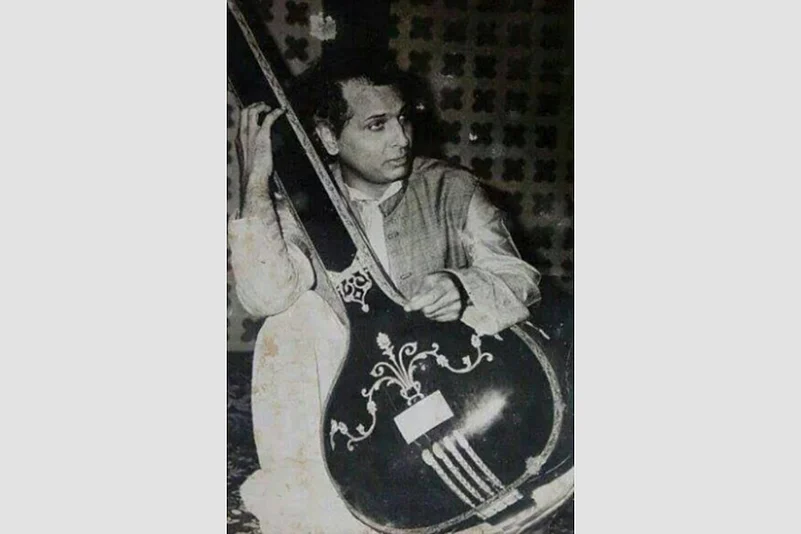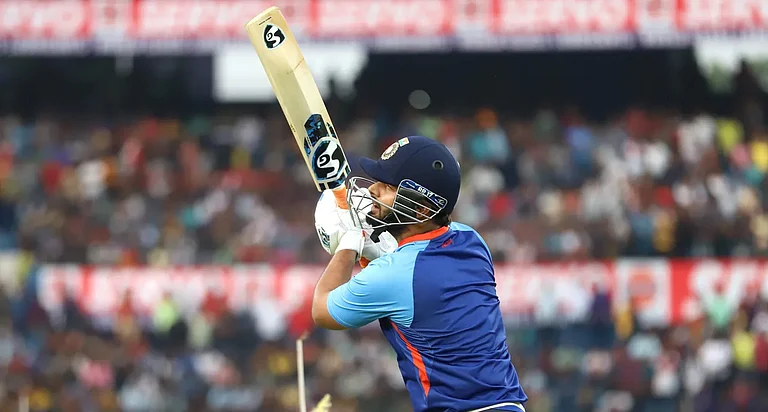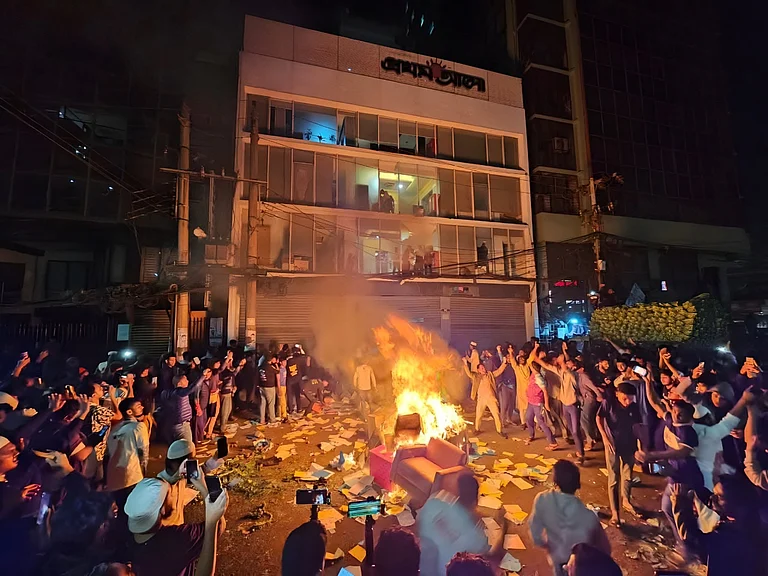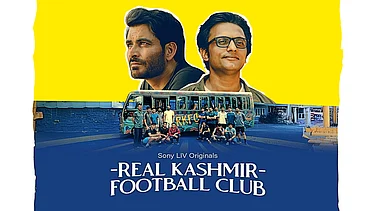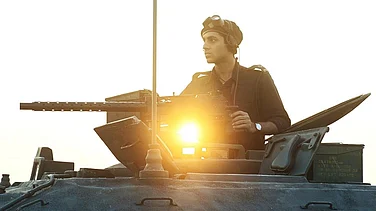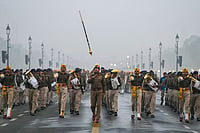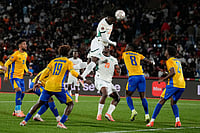Dense swirling clouds blur the horizon, but I know they are there, the low hills of Mewat, slung like mute sentinel around this plastic matchbox city. Young Jasraj is playing, Kunj Bihari, all spry and sombre at once; recorded perhaps in the year I was born…. There’s been a belated systolic rush of monsoon, and the glass door of my eyrie is fogged over. A flotilla of aural shards and fragments swim into memory; a mélange of things heard. Rifling through them, I absent-mindedly play a little game of mirrors. Place three canonical, popular figures of Hindustani vocal music—Ustad Amir Khan, Bhimsen Joshi and Pt Jasraj—in front of a mirror. What happens?
All three answer, one way or the other, to the conventional description of good-looking. Amir Khan, soft and professorial, introverted. Bhimsen, craggily masculine, and knows it…but couldn’t care less. Jasraj, dimpled, preening, not above looking at himself in the mirror. Is this valid musicological analysis? Despite myself, I try to trace a movement, from the attitude towards the self to its musical analogue—passing from the tactile, things like texture, to something one can’t touch: a musical persona, the sum total of a set of cultivated habits and practices. Here, Amir Khan comes across as the stillness at the centre of the dervish’s whirl, he passes clean through the glass to the silence on the other side. Bhimsen is all copper and gravure; writ in pyrography. And Jasraj? He shimmers and dances on the surface of the glass itself. At his best, he enters a charmed pictorial world on the other side, a Brindaban suspended in miniature art, a peacock-studded bucolic idyll. Enchantment is the rule here, a touch of flirtatiousness that’s quite krishnal, to coin a word. He was self-consciously that: Kunj Bihari, thaari re, bansuri laage man-pyaari….thy flute, Krishna, allures me so. Enchantment was utterly within reach too: here was someone who bodied forth the sensuous. Timbrally pleasing, rich velvet on the low tones, but a metal ductile enough to be drawn into thin filigree, though the upper register was perhaps not his most natural habitat.
The more empyrean realms were not unknown to him. No musician who climbs up to that ivy league can be innocent of that. Watch him in the 1971 documentary by the Canadian filmmaker James Beveridge—a handsome 41, a divo version of the old cinema hero Mahipal, the staple of Shantaram (whose daughter Jasraj married). And listen: a Bhairav burns like sheets of sunlight from a Bombay flat. Give him his gharana specialties, the Shuddh Barari above, with its saturnine Marwa colours, or the Multani, spare and sere and unadorned like his Mewat countryside, or even the viscosity of a Megh Malhar alap…he fills out the space with all the solemnity and grace you want. And the taans! Moving like lightning through those water-laden clouds, a flash of ether, occasionally too much flash. But the real pleasure he afforded was of the drizzle and the petrichor.
Catch him in a DD short with his elder brother Pt Maniram, and you see the contrast again. Maniram is stolid, schoolmasterly, wedded to his canon and old-world ethos: not prone to crowd-pleasing. Jasraj, impatient, almost coquettish, straining to break out of the frame. The two would have surely been unsuitable candidates for a duo: not just in timbre but in sheer musical temperament. To express it in a seeming paradox: in spirit, Jasraj was tied to the fleshly. In art terms, he was closer to figurative. Not literally, like with a sitarist’s gayaki ang…but in that he never recused himself from the world into utter abstraction. I have once seen Mukul Shivputra drown in a Marwa alap so deep that, when he accidentally opened his eyes in between, he was almost startled to find an audience in front of him. You would have never caught Jasraj in such solipsis.
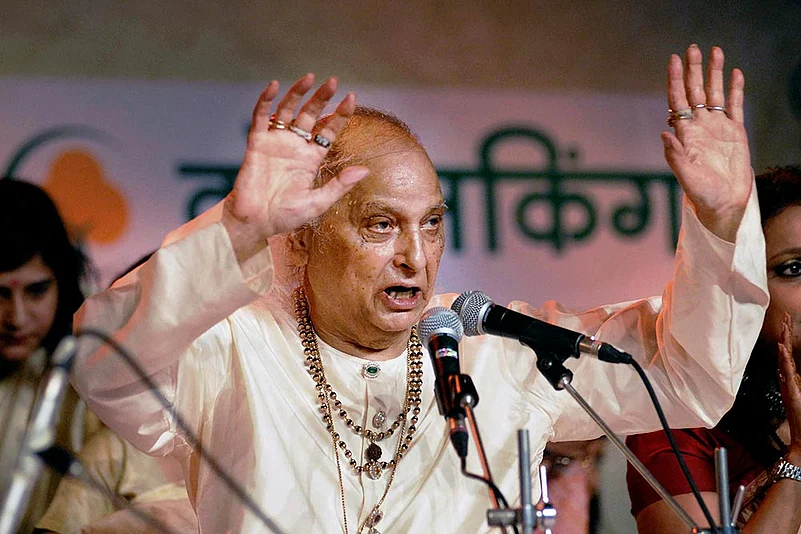
This is also what allowed generations of new initiates into what can be the forbiddingly alien world of Hindustani classical. The debate between accessibility and purity can never be complete: both have their functions. Classical musicians are often unfairly accused of being hermetic and esoteric; the reality was often vastly different, a Gauhar Jaan started recording for gramophone back in 1902! But Jasraj’s musical persona was ideally suited for that niche he cultivated, on the cusp between aloof and approachable. This is what enabled him to become one of the early popularisers, in whose wake would follow many others, the likes of Rajan-Sajan Mishra, or the Gundecha brothers.
Moments flash by. My first sighting of him is my first encounter with classical: the early ’80s, my father had taken me, and what was this strange whirligig of sound! It was baptism by bewilderment, even fear. (Years later, a friend told me of a young boy in his village in Shekhawati who would be terrified when Carnatic played on the radio.) Then, mid-’80s, the cusp of adulthood: now he appeared as god, the very epitome of the classical vocalist. Till wanderings took one to other seas. The thing with easily crafted godliness is that it always runs the risk of turning into a chronicle of disappointment. There he was, while personally a chip of the old block, beginning to respond to the new demand for noveau-pop bhakti with classical flavours—created and milked by music companies—for those who wanted a step up from ghazal/bhajan merchants. There he was, pulling out old Mewati gharana stutis and adding dozens more in Sanskrit (!), right up to an unseemly Madhurashtakam. I had to stop buying his tapes after one particular Jasrangi experiment, with a female accompanist, that made an unseemly fusion cuisine out of Multani. And then the mid-2000s, the final apostasy: heading for the exit door ten minutes into a concert that had all the air of a satsang.
How does one reconcile these strands? How do I stay with, and honour, a broken idol? To invoke his pristine self, his grand and primordial presence of the past, is simple enough. But maybe there’s something deeper, something that emanates like vegetation and humidity from the soil itself…the soil of Mewat, its rough and hardy beauty, its language and ethos coloured by the desert on the west and central India to the south. But the triangle from which it arose is completed by its eastern flank: it abuts Brindaban. When Jasraj goes into his Multani, the bandish reflects the rough charm of the native brogue. Gokul gaanv ka chhora, Barsane ki naar…that lad from Gokul village, the lass from Barsana! The sky is now the colour of Krishna and the earth a waiting Radha; he departs at a time when union should have been at hand. Singing Chadiye Mulak Sultan in Nat Bhairav….
But cast your eye over this ruralia he leaves behind and consider how it marks our music. Just the names: Nat, Ahir, Gujjar…even Turushka (or Turk), attested as far back as Sarangdev’s 13th c text. Or the toponyms: Brindabani, Multani, Pahadi. Can we take Jasraj to be a different kind of cusp figure? One whose musical persona was so organically tied to his specific terroir, despite his gharana ecumenism, that he could enable us to see the folk airs that float up behind the music grammarian’s regime, like a spectral gypsy caravan of melodies?
One’s relationship with a preceptor is often as complex as that with a parent: we do not come into being without them, yet we militate and struggle to wean ourselves away, and preen at ourselves in the mirror. Then they go. And we realise there’s never attaining that kind of completion, that it’s a horizon forever beyond our limits. There goes Jasraj. And those words float up from the desert…aaoji mhaare Kunwar Kanhaji, thaare bin naina neend bisaari. Nothing left to do but become monsoon water on our own glass panes.






